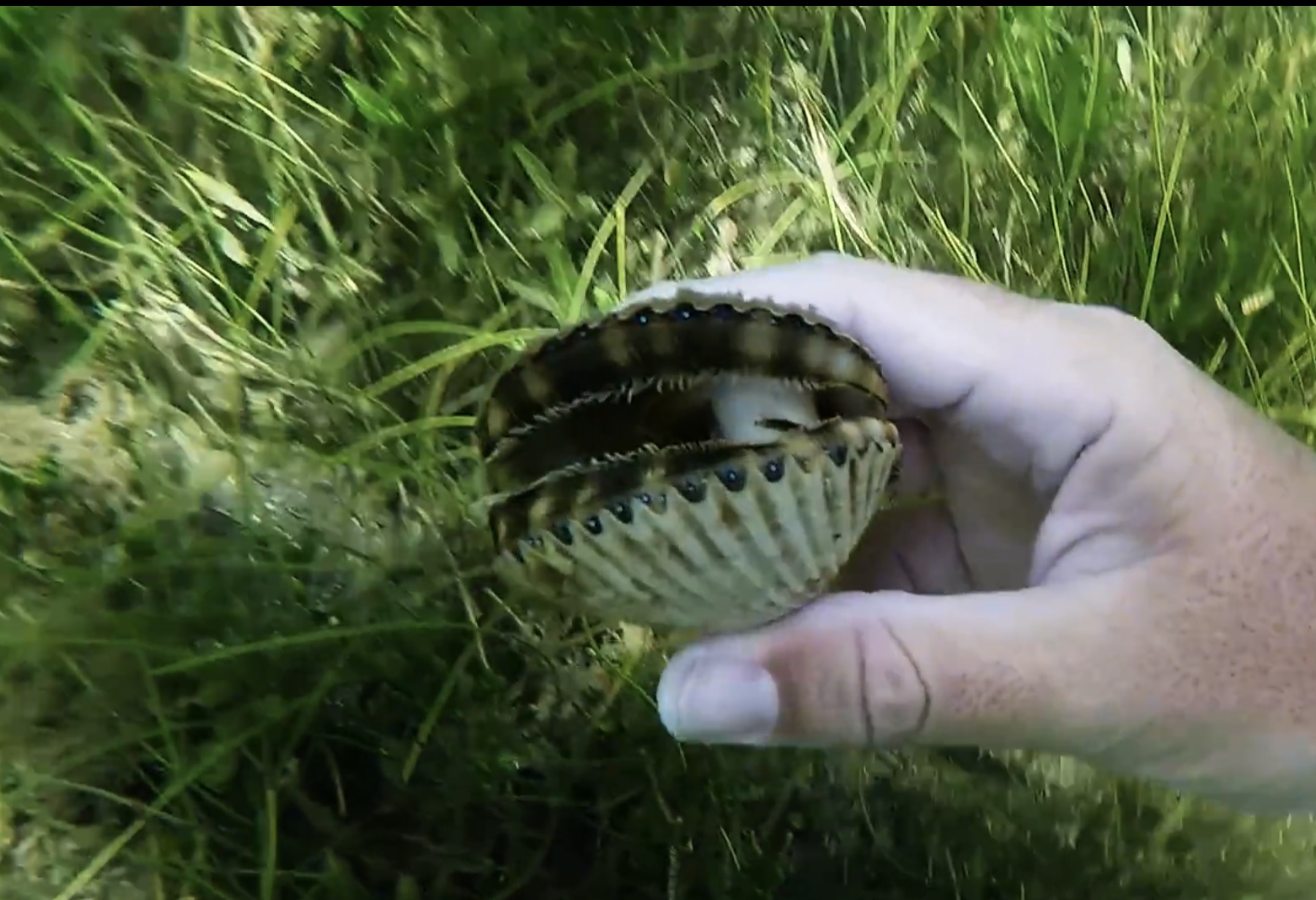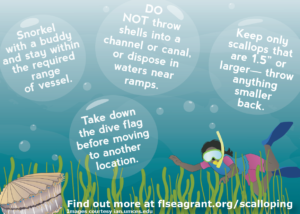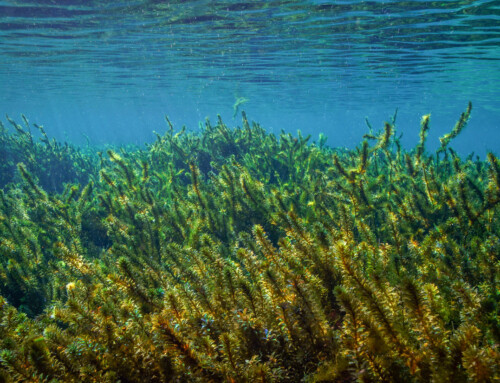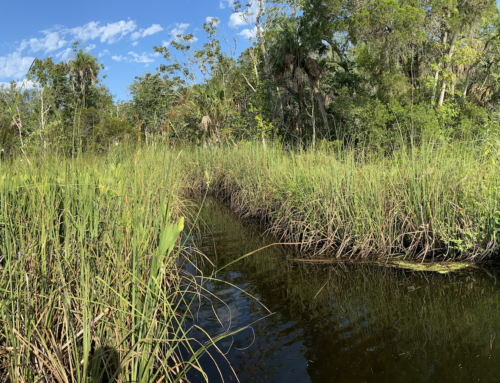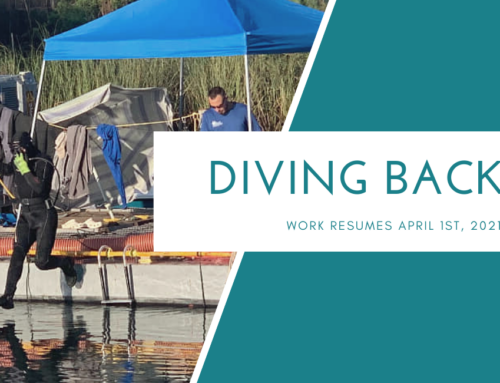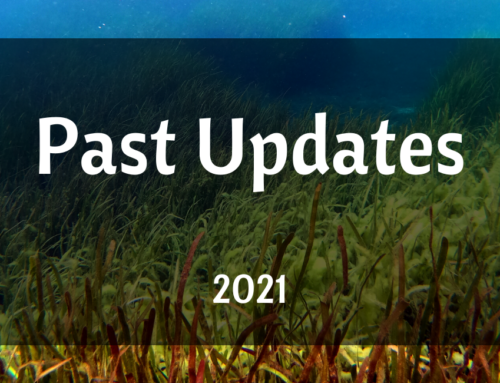Don’t Toss Your Shells!
Scallop season begins July 1st in beautiful Crystal River! We love to dive down and grab up the white shells filled with delicious scallops. However, don’t toss back your scallop shells into the river! Shells can accumulate and blanket areas around the boat ramps and docks. This kills the vegetation on the bottom and destroys the habitat for fish, crabs, and manatees. Read below to learn all about scallops, their habitat, and how to properly dispose of shells.
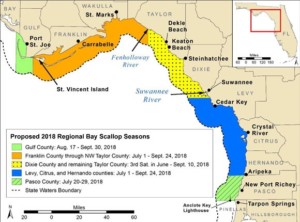
Pictured: 2018 regional bay scallop seasons. (Map by the Florida Fish and Wildlife Conservation Commission)
Scallops were reintroduced to local gulf waters in a project that has been incredibly successful! They live offshore in beds of seagrass, but scallops don’t live in our Kings Bay fresh water. In King’s Bay there isn’t a heavy tidal action to bury them deep in the shifting sands. The shells end up being trash that stops the growth of plants in places where they are dumped. And nothing in Kings Bay and Crystal River feeds on those shells or removes them from the canals. So, don’t toss back your scallop shells into the river, or the Bay, or Canals! Use them in a decorative way, or put them in a place on land where hard shell fill is desirable.
Healthy salt water seagrass meadows are essential for maintaining scallop populations. How does seagrass play into scallop growth? In the fall, scallops reproduce. After a two-week period as plankton, larvae develop a small shell and settle onto a seagrass blade. The larvae are attached to the grass blade by a mass of silk-like filaments called a byssus. At this stage, the larvae grows into a larger scallop that we know so well. Once grown, the scallop falls from the grass blade and becomes a free swimmer. Scallops use their shells to fly through the water. By clicking their shells, and forcing expelled water from their bodies, the scallops can easily get around the seagrass meadow.
Typically, scallops live only one year before naturally dying or being eaten by humans, crabs, octopi, or any variety of shell crushing fish. Any empty shells down in the seagrass meadows can only come from bad shell cleaning practices. Follow these best shell cleaning practices to help protect and preserve the seagrass beds, as well as, the scallop season fun:
- Watch where you anchor! We recommend to use a Seagrass Safe anchor, but if you don’t yet have one of those, then be sure to not cause anchor scars in the seagrass meadows.
- Move your boat away from the scalloping areas before cleaning your catch.
- When finished cleaning scallops, do not discard shells in the river, the canals, the springs, or at boat ramps or marinas. Shells will fill these areas killing or preventing eelgrass from growing, which cause negative impacts on the swimmers, boaters, wildlife, and the surrounding community. Eventually, someone will have to remove them, at some expense. One option is to discard scallop shells out in open Gulf Waters, but we recommend taking them home to be used in garden beds, natural mulch, for clean fill, or for crafts!
- Taking the shells home? Good choice! Place the shells in a net bag and put the bag in the water. Small fish and crabs will be happy to clean the shells for you.
- Keep an eye out for boaters wanting to dump shells in the Kings Bay Restoration Project. Scallops are not naturally found in fresh water. Please kindly inform any scalloper that the shells will cause damage to our precious eelgrass. Thank you for all your help in keeping the Kings Bay Restoration Project safe from damage!
Want to learn more about scalloping in Citrus County? Check out the Florida Sea Grant handout: https://www.flseagrant.org/wp-content/uploads/SGEF_233_2018_web.pdf


